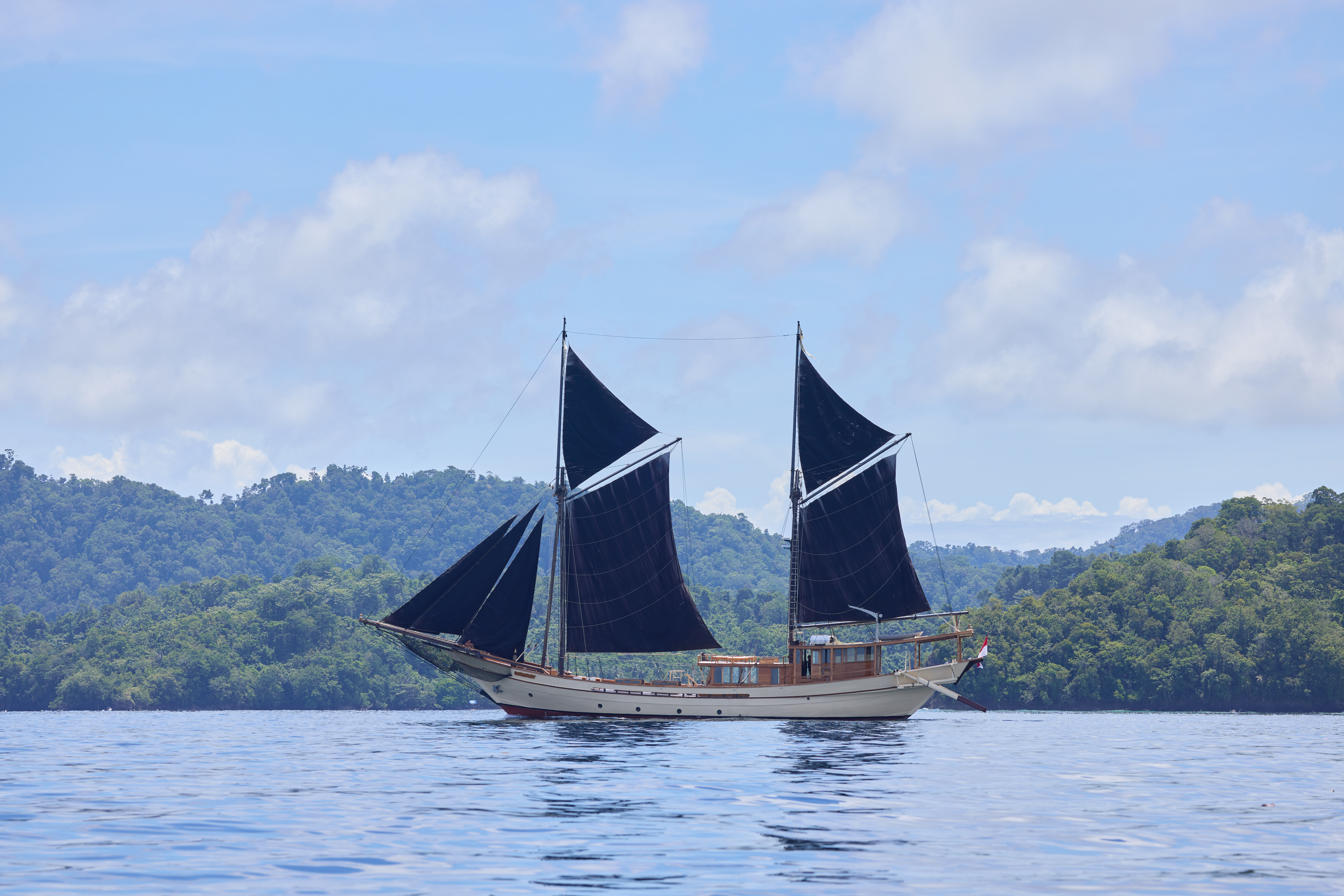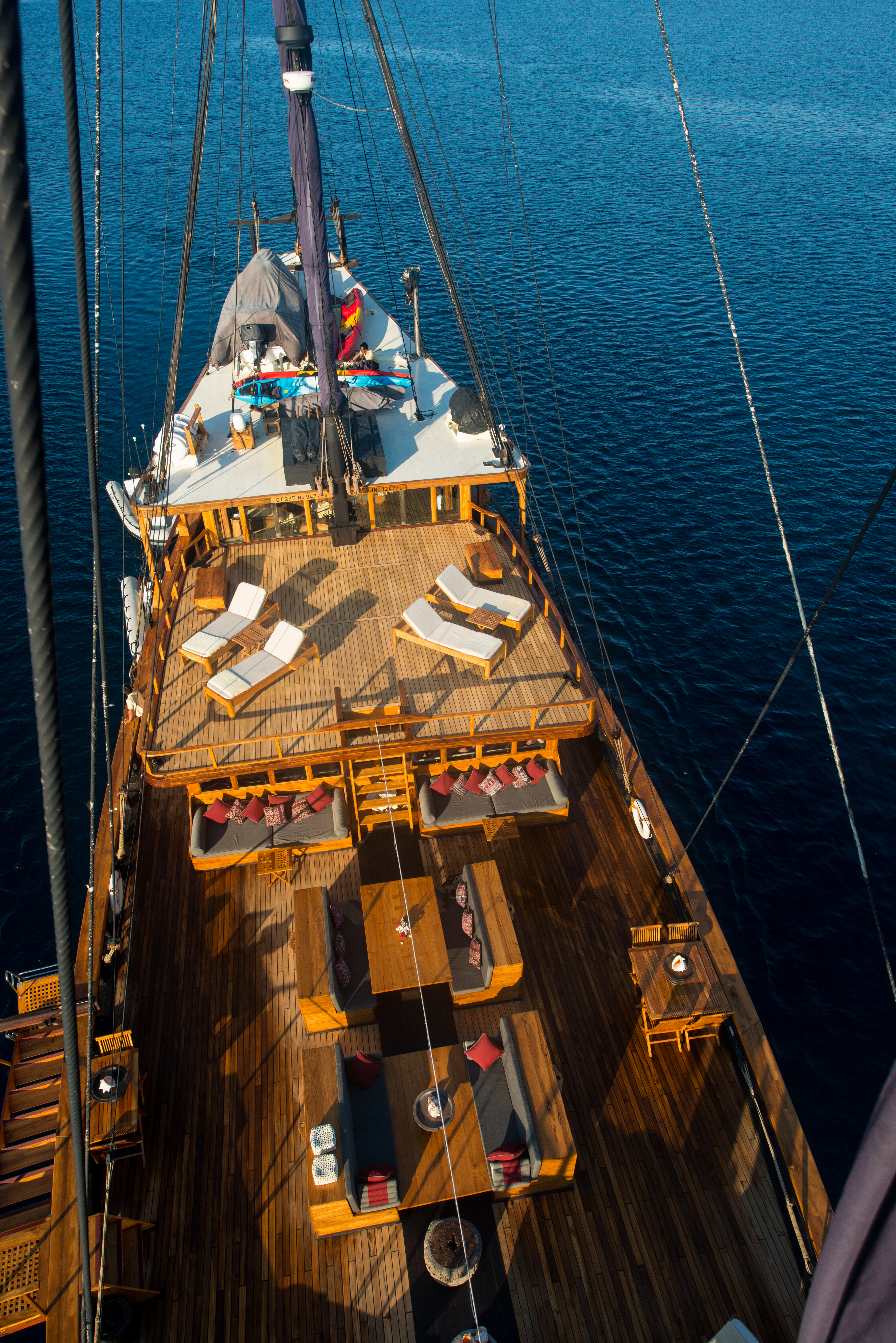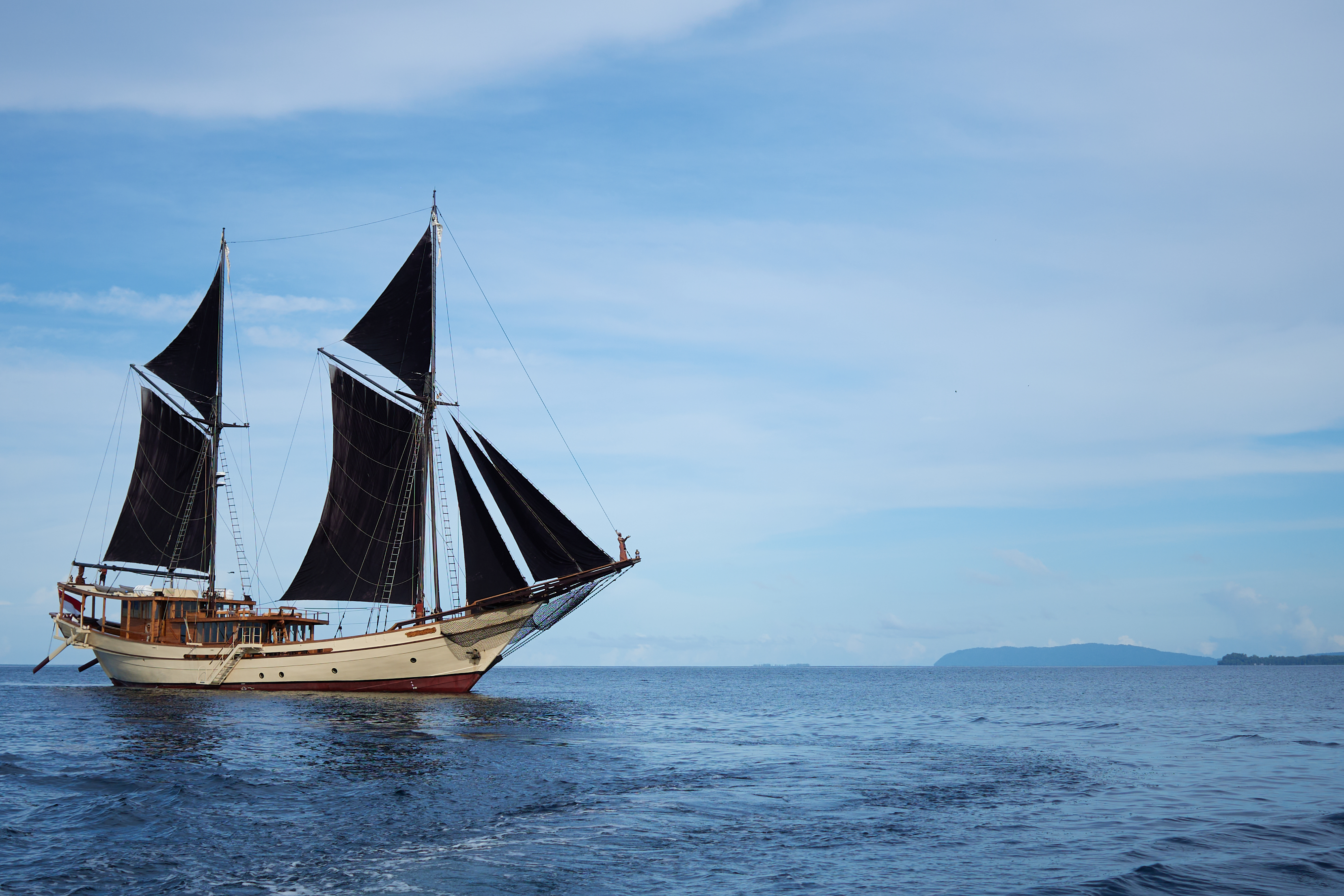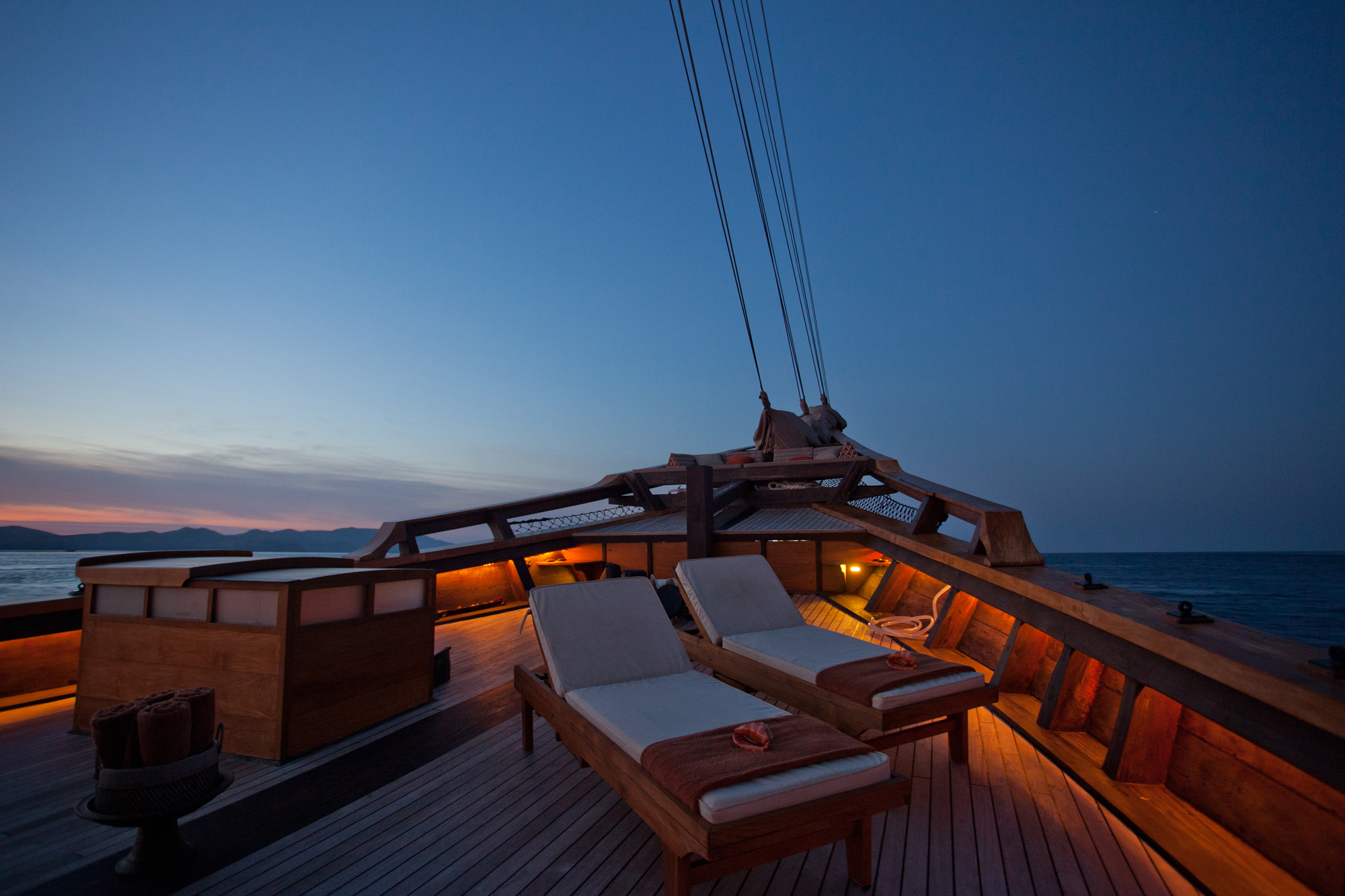The Art of Phinisi Design: Blending Indonesian Craftsmanship with Modern Luxury
When you step aboard a Phinisi, you’re not simply boarding a yacht—you’re entering a living story carved from wood, salt, and sea wind. Each curve of its hull and every polished grain of teak holds centuries of tradition, carrying whispers of the Bugis and Makassarese sailors who once mapped the vast Indonesian archipelago by stars and intuition alone. Today, aboard vessels like Silolona, that same spirit of exploration lives on—refined through design, reborn through craftsmanship, and elevated through the language of modern luxury.

The Soul of Phinisi: Heritage Written in Wood and Wind
The Phinisi is more than a boat—it’s a cultural emblem of Indonesia’s seafaring past. Originating from the Konjo shipwrights of South Sulawesi, each vessel is a product of knowledge passed from father to son, shaped not by drawings or blueprints, but by memory and ritual. Construction begins with a blessing—a moment when earth, water, and sky are invoked to protect the ship’s journey.
Every Phinisi begins its life on land, taking form from ironwood (ulin) for the keel and teak for the decking—materials revered for their strength, resilience, and grace. Ironwood, nearly impervious to salt and time, anchors the vessel’s structure, while teak breathes warmth and beauty into the decks and cabins. These timbers expand, flex, and sing with the ocean—a dialogue between craft and current.
According to The Journal of Maritime Archaeology (2020), Indonesia’s wooden shipbuilding culture is among the world’s oldest living maritime traditions—its endurance a symbol of the archipelago’s identity as a nation of sailors and artisans.
When you trace your fingers along the hull of a Phinisi, you touch more than craftsmanship—you touch continuity, a living connection between the hands that built it and the waves that carry it.
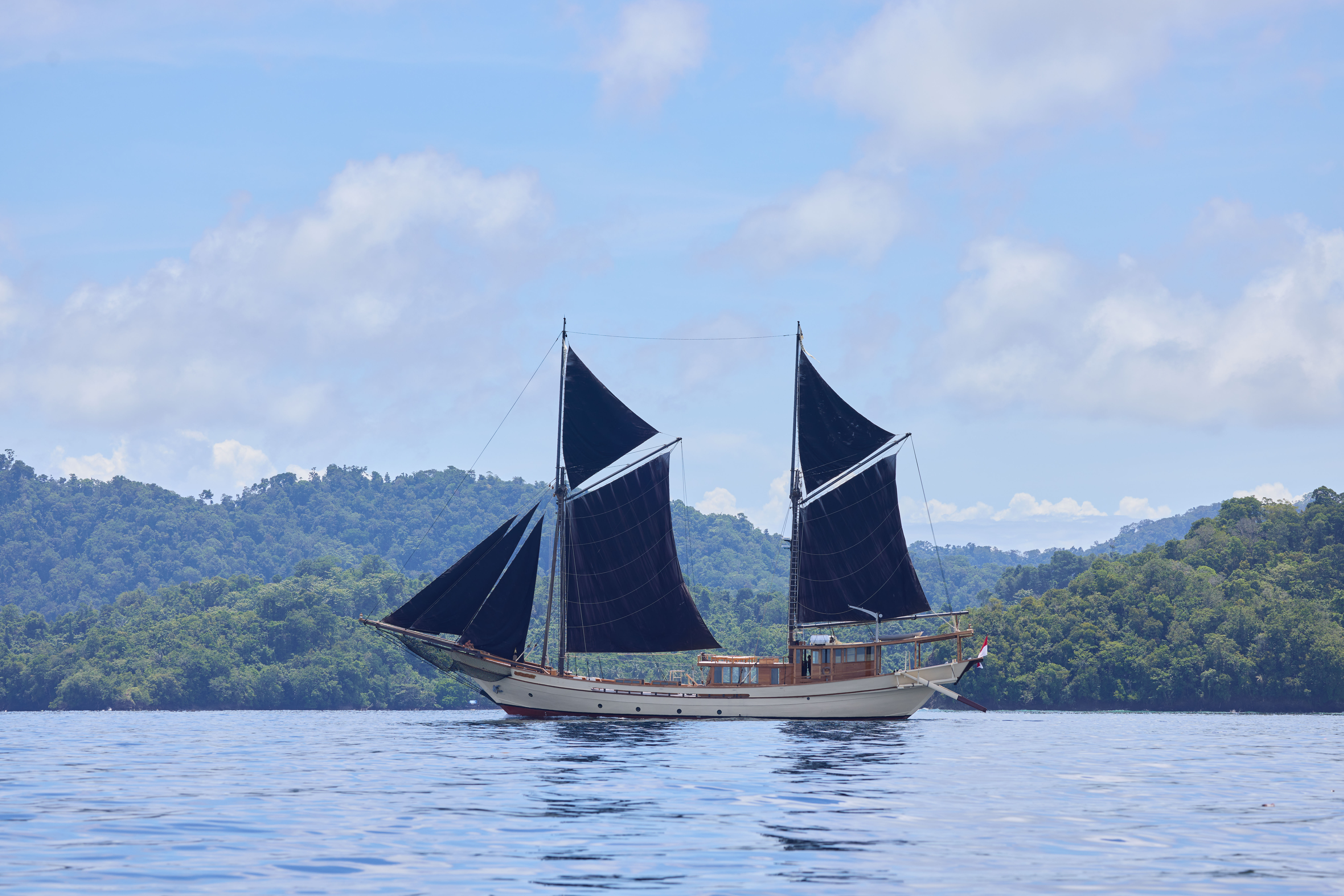
The Silolona Design Philosophy: Crafting Balance Between Tradition and Modernity
For Silolona Sojourns, building a Phinisi was never just about constructing a yacht—it was about embodying a philosophy. Each vessel stands as a tribute to Indonesia’s artistry, carefully balancing the spirit of tradition with the comfort of modern living.
Handcrafted by Konjo shipwrights in South Sulawesi, every Silolona yacht reflects a commitment to authenticity: no two vessels are identical, because no two hands work wood the same way. Yet the result feels effortless—a seamless blend of structure and soul.
Inside, heritage meets refinement. Hand-carved beams frame open, light-filled spaces dressed in artisanal textiles, woven mats, and natural fibers sourced from across the islands. The interiors carry an understated elegance—minimalist lines softened by organic textures and the gentle patina of age.
This balance between strength and softness, simplicity and detail, mirrors what The International Journal of Nautical Archaeology (2022) calls “vernacular adaptation”—a process where local tradition evolves naturally with time, creating design that feels both ancient and new.
Aboard Silolona, that evolution feels alive. You can sense it in the curve of the deck beneath your feet, in the way light glows across oiled teak, in the quiet assurance that every plank was placed with intention.
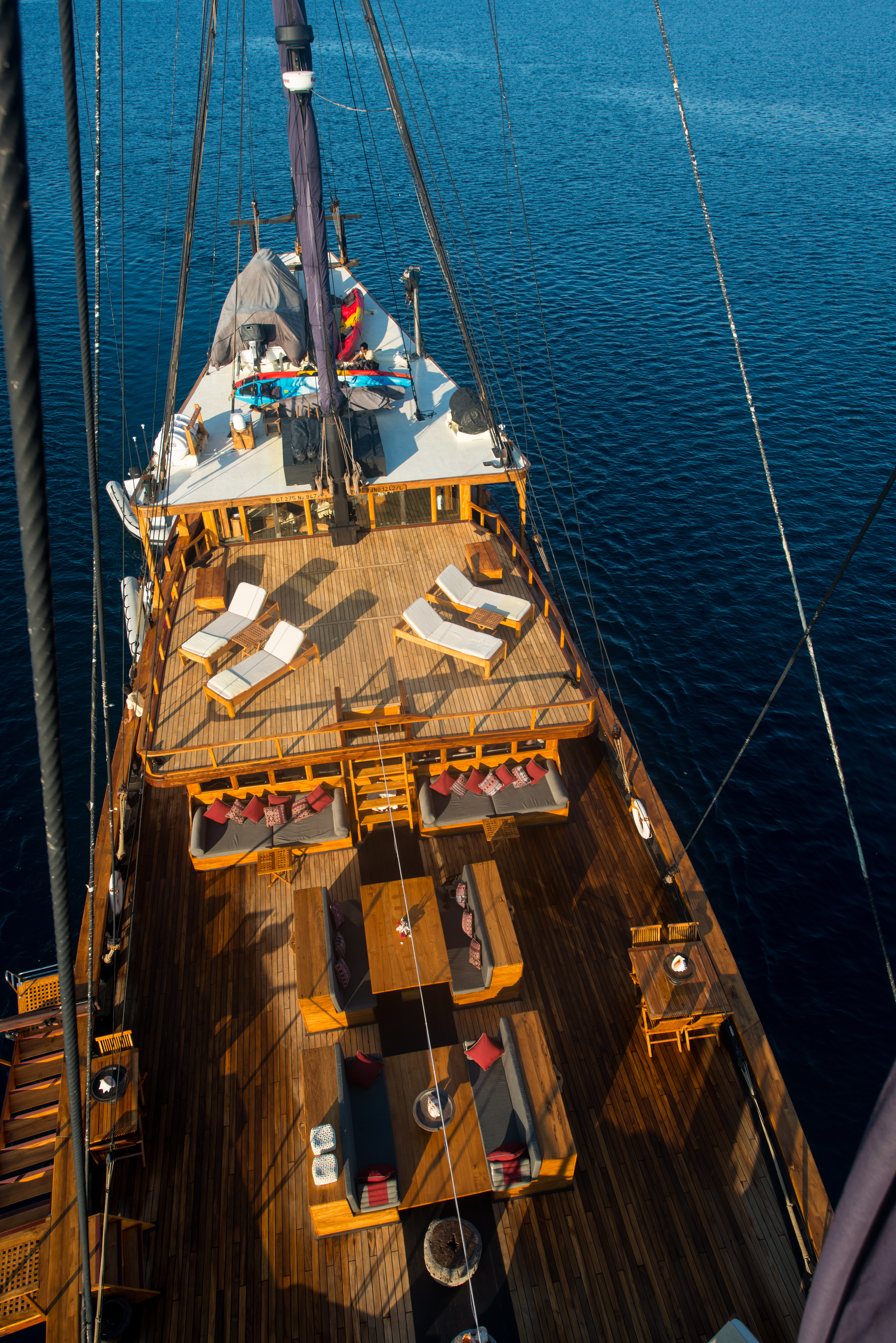
Materials as Memory: Ironwood, Teak, and the Living Language of Craft
The materials that shape a Phinisi are chosen not only for durability but for story. Ironwood (ulin)—dense and unyielding—forms the spine of the ship, ensuring it withstands decades of voyaging through monsoon seas. Teak, with its natural oils and fine grain, wraps the vessel in warmth, its scent a soft reminder of the forests that nurtured it.
These timbers are alive. They shift with humidity, absorb the sea’s breath, and deepen in color over years of travel. This evolution isn’t seen as decay but as character, proof that the vessel itself is a traveler, aging gracefully with each journey.
As marine historian James Hornell once wrote, “In timber lies the patience of the builder and the endurance of the voyage.” For Silolona, that endurance extends beyond the sea—it’s a philosophy of sustainability. Each tree harvested is replaced; each collaboration with local forestry cooperatives strengthens the cycle of renewal.
Here, beauty and responsibility intertwine. Every grain of wood, every fiber of rope, speaks to a larger truth: that luxury, when rooted in integrity, becomes timeless.

Modern Comfort Within a Heritage Frame
Aboard a Phinisi, modern luxury is never ostentatious—it’s discreet, woven seamlessly into the vessel’s natural rhythm. Silolona’s interiors offer air-conditioned suites, en suite bathrooms, and state-of-the-art navigation systems, yet none of these features intrude on the ship’s authenticity.
Technology hums quietly in the background, concealed within the wooden architecture. Solar-assisted energy powers onboard systems; lighting is designed to preserve the warm hues of the timber; handcrafted furnishings invite touch rather than display.
What emerges is a sense of refined intimacy: a sanctuary that feels at once timeless and tactile. You might find yourself reclining beneath a sail stitched by hand, lulled by the ocean’s pulse, surrounded by craftsmanship that feels human—because it is.
This is not the cold perfection of mass luxury, but the soulful imperfection of the handmade. Each creak of the hull, each brush of wind through the rigging, reminds you that this is a vessel born from human hands and ancient seas.
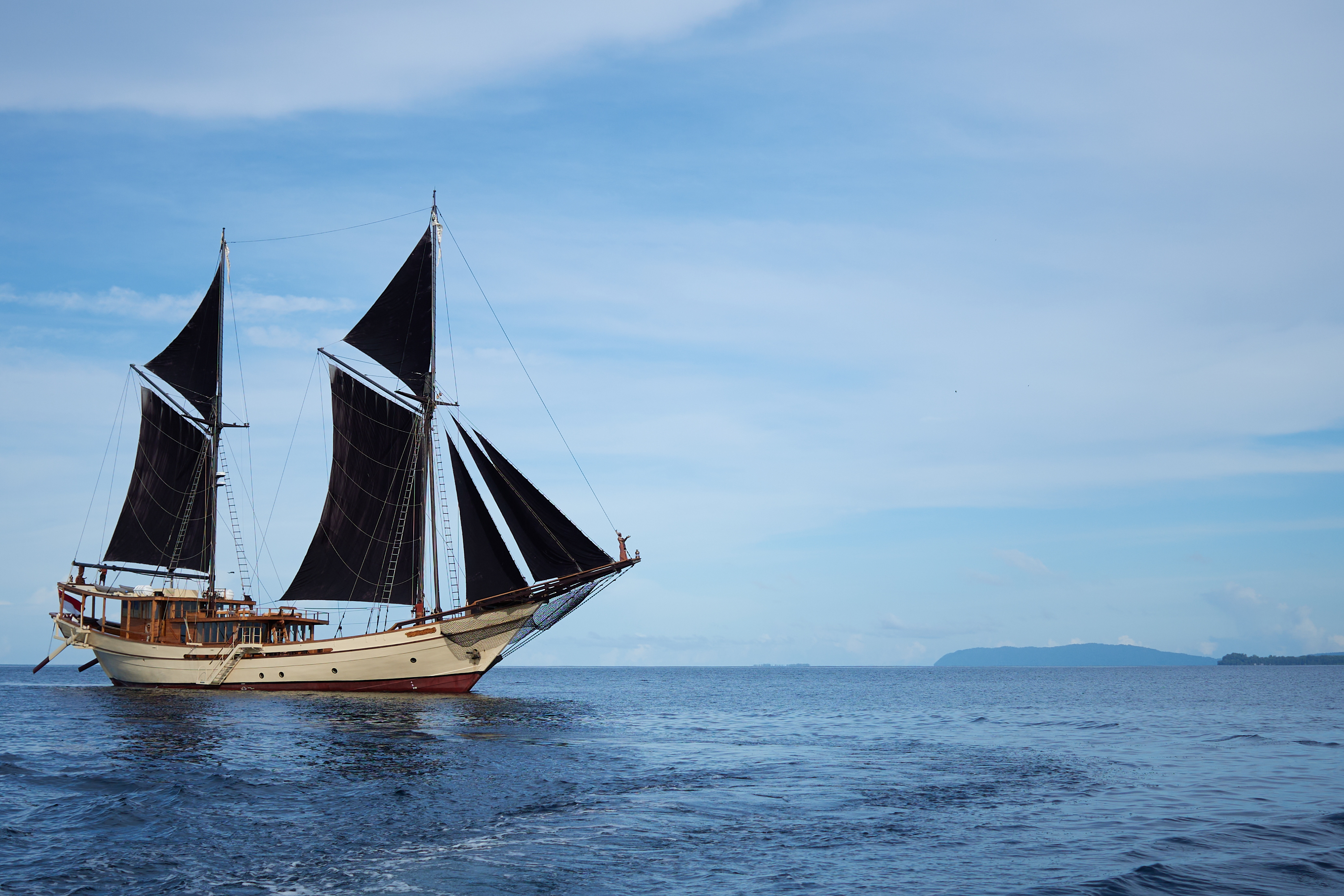
Beyond Design: A Legacy That Breathes and Sails
Sailing aboard Silolona is to witness an unbroken chain of artistry stretching back through centuries. Every nail, knot, and carving embodies Indonesia’s living maritime culture—one that refuses to be confined to museums, choosing instead to sail forward into the present.
Each voyage becomes a continuation of this legacy: an exchange between guest and maker, between the sea and those who still listen to its language. The design doesn’t just look beautiful—it feels alive.
As The Journal of Design History (2021) observes, “Luxury anchored in heritage transcends fashion; it becomes continuity.” Silolona captures that truth with grace. It’s not a yacht designed to impress; it’s a yacht designed to endure—a vessel where time slows, where craftsmanship breathes, and where modern travelers rediscover what it means to journey with intention.
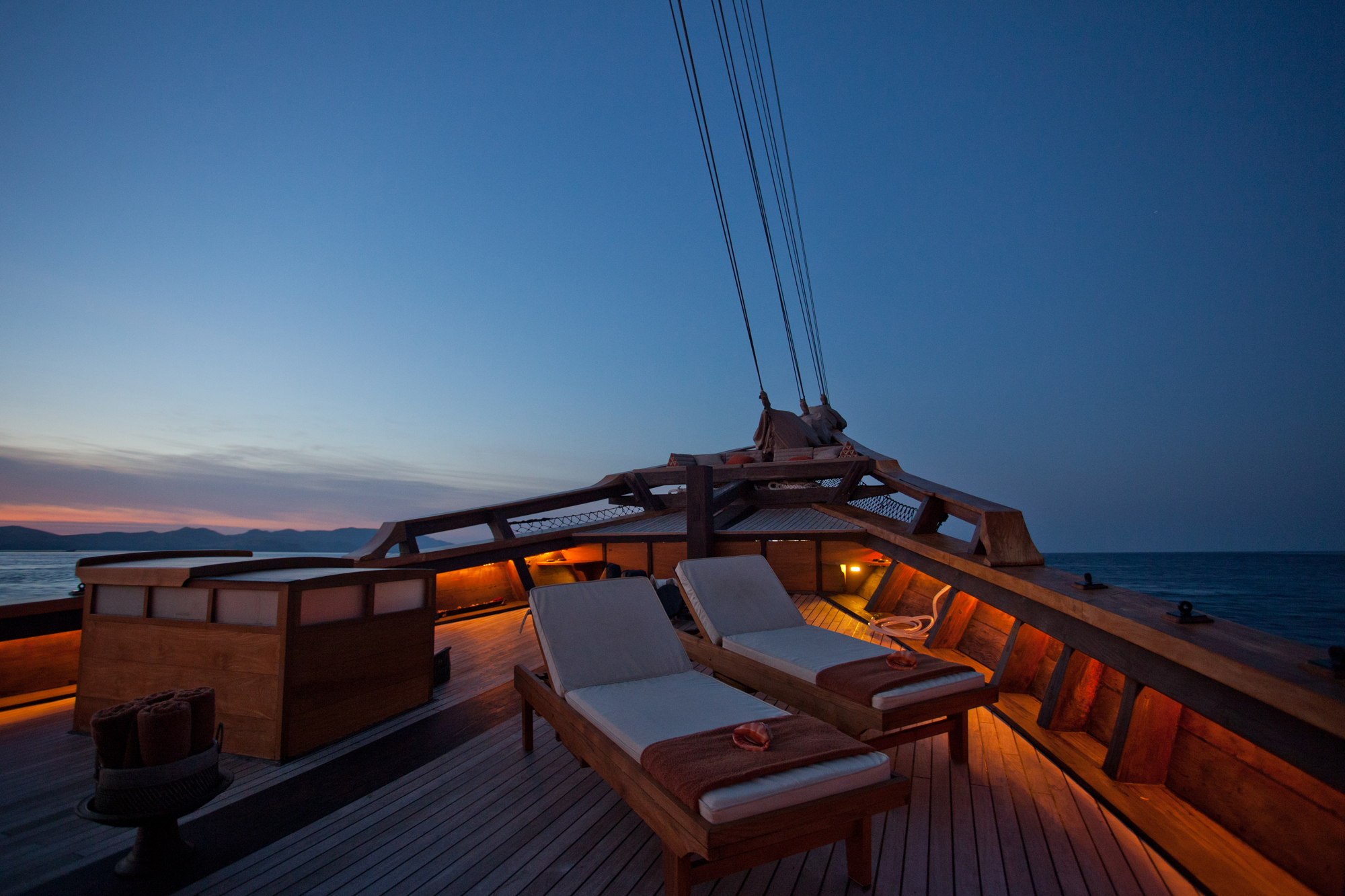
FAQ
What materials are used to build Phinisi yachts?
Phinisi yachts are built primarily from ironwood (ulin) and teak, selected for their strength, resilience, and timeless aesthetic. These locally sourced woods are naturally resistant to saltwater and weathering.
How is modern luxury added to traditional boats?
Modern amenities—such as air conditioning, solar-assisted power, and bespoke interiors—are integrated subtly into the traditional wooden structure to enhance comfort without altering authenticity.
Who designed Silolona?
Silolona was designed through collaboration between master Konjo shipwrights of South Sulawesi and modern naval architects, blending centuries-old craftsmanship with contemporary design principles to embody the art of Indonesian maritime heritage.

Experience the Art of Phinisi with Silolona Sojourns
To voyage aboard Silolona Sojourns is to sail through Indonesia’s artistry itself—where craftsmanship becomes architecture, and design becomes storytelling. Each journey celebrates the intersection of heritage, sustainability, and modern comfort, shaped by 30 years of expertise in luxury yacht charters across the Indonesian archipelago and Southeast Asia.
Silolona’s team goes beyond navigation and service. They curate every detail—from provisioning and customs to bespoke cultural itineraries—ensuring that each moment feels personal, seamless, and purposeful.
Here, luxury finds its truest form—not in extravagance, but in authenticity. In the quiet precision of craftsmanship. In the artistry of the sea. And in the rare experience of sailing aboard a living legend—the Phinisi.




